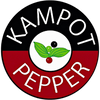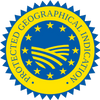What makes Kampot pepper better?
Basically in everything. Similar to tomatoes from a garden compared to tomatoes from a supermarket. Anyone who still hasn't grasped the essence of the uniqueness of the peppercorns we import from the Kampot province in Cambodia may wonder what makes this pepper better than others. To understand why it is considered the best pepper in the world, we must go directly to the plantations of small Kampot farms, where pepper vines sprout from mineral-rich soil and peppercorns ripen under the beneficial rays of the local sun.

White, black, green or red?
All types of pepper are actually the fruits of a single plant, the black pepper vine. Similar to many other plants, the quality of the fruits is influenced by a variety of factors, with the most important being the environment in which the plant grows and the way it and its fruits are cared for.
Just as French or Italian slopes are ideal for growing grapevines and thus these countries produce truly quality wines, Cambodia’s Kampot is also a suitable place for growing pepper. The pepper vines here grow from a substrate that has an ideal balance of sand, clays, and humus. The soil is rich in minerals, providing the root system of the vines with ideal nutrition for rapid growth and the production of truly high-quality peppercorns.
Quality soil is only the foundation
Kampot is a coastal region with a climate influenced by the nearby ocean. It is humid and genuinely warm. Sunlight hits the leaves and subsequently the ripening peppercorns with ideal intensity. The plants are neither burnt nor dried out, but their tissues are constantly warmed and the photosynthesis process runs at full capacity. The sun in the ripening fruits promotes the formation of characteristic substances such as fructose, piperine, and unique flavor and aromatic tones that contribute to the quality of the peppercorn.
On top of all this, add centuries-old unchanged methods of cultivating pepper vines that local small farmers apply. No chemical sprays, no synthetic fertilizers, just pure nature and fertilization using guano, which is extremely nutritious bat droppings. Buy a tomato from a supermarket that has been bathed in chemicals from a young age and compare its taste to a tomato grown in your own garden.
Exactly the same difference applies to Kampot pepper grown on small farms versus pepper from huge large-scale plantations where the vines are continuously supplemented with chemicals because they are grown in unsuitable environments and chemicals have favorable conditions to compensate.
Last but not least, there is also the subsequent processing of the pepper. Our pepper undergoes strict selection. Poor or insufficiently large grains are discarded, so only the true top-quality grains end up in the bags. However, this cannot be said about the content of Package from mainstream brands, where besides dried peppercorns you can also find various impurities, twigs, and even encounter mold.
This pepper is usually transported for several months in large bags on ships, where it becomes musty, loses the little quality it had, and molds. We vacuum pack our pepper immediately after harvesting and sorting and send it by air to Europe. Therefore, we can proudly and confidently say that our pepper is truly better than the pepper commonly available in supermarkets.
Share






